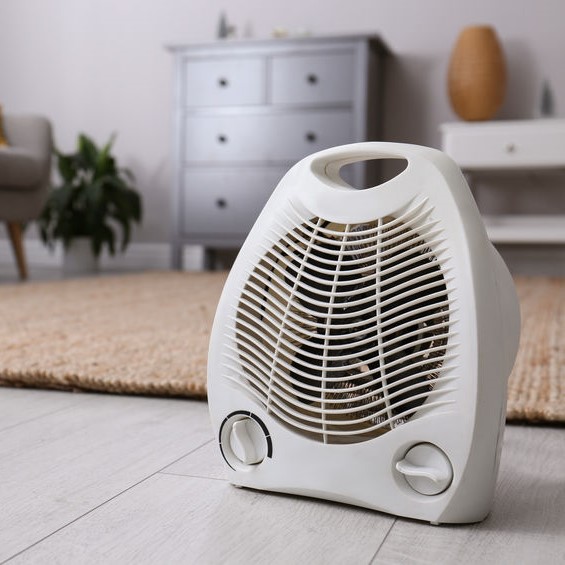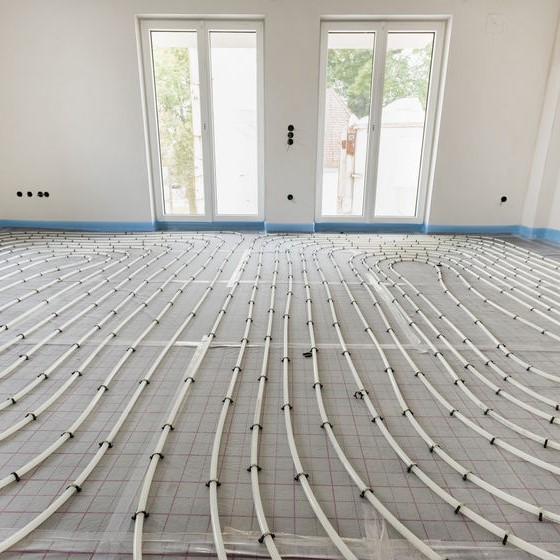
Keeping your feet and home warm
Bbbbrrrr … nothing like getting out of a toasty warm bed and your feet hit those cold floors! That’ll wake you up before you get that first cup of coffee! Cold floors in houses isn’t anything new for those who live in older homes where wood floors were normal. For those who have lived with carpeting though and upgrade to hardwood flooring, cold floors can be a shock.
So, why is my floor so cold? There could be a couple of reasons why you have cold floors, and the flooring material could be a big reason. Ceramic tile and marble flooring materials are naturally going to be cold. However, when you have cold floors and walls, especially persistently cold floors, it may be time to do something, but what?
First, you need to determine what and why you have cold floors, then you can determine what to do about them. The most common causes for cold floors:
- Insulation: The insulation on the ground floor of a home are usually the coldest. This is because heat rises, and the floor is on top of the basement or crawl space. Basements and crawl spaces are rarely insulated sufficiently, most aren’t even insulated at all, resulting in cold floors.
- Air Leaking and Drafts: As the hot air rises, a vacuum is created that pulls the cold air up, and if there are air leaks or drafts, that cold air seeps through and hangs around the floor, the basement, the foundation, and windowsills, which radiates to the walls.
Can you heat a whole house with radiant floor heating?
Absolutely! The thought that radiant floor heating is just keep your tootsies warm in the winter is misguided, although it does feel good in the winter. When you compare radiant floor heating to other heating systems, you don’t have the dusty ductwork, noisy vents, or rattling radiator. What you do have is an even distribution of quiet heat.
The heating system is heated by electricity or water, goes into the floor, and can be used room-specific, bathrooms and bedrooms are often the first choice, or it can be used as an effective, energy efficient, viable way to heat your entire home.
Energy efficient you say. Yes, a radiant floor heating is and energy efficient way to heat because it works on demand. If you don’t need heat, you don’t use and no waste! Because heat rises, it starts at the floor and rises up through the house. Thus, it is generating more heat and using less energy to do so!
Do heated floors use a lot of electricity?
Surprisingly for most people considering radiant heat flooring, no, they do not use more electricity. A normal electric floor heating element produces fifteen watts per square foot and when used in a 35 square foot bathroom, set to run eight hours a day, it uses just over 4.0 kWh. That comes out to less than $7 per month based on the nation’s average of .12 kWh. A window air conditioning unit cost almost $37 per day.
How long does radiant floor heating last?
One hundred years! Yes, you read that right. A radiant floor heating system is made from high tech materials and with proper care and maintenance, you can expect that radiant heating to be preventing cold floors 100 years from now. This is 4 to 5 times longer than the average lifespan of a conventional HVAC system.
In addition to proper care and maintenance adding to the longevity, proper installation is key. A radiant floor heating is not a DIY project and must be installed by a certified and licensed contractor. If you desire cold floors to be a thing of the past in your home, choose a technician that is experienced, certified, licensed, and insured. The right contractor will know how to help you choose the system best for your home based on your budget and needs.
Is radiant floor heating worth it?
You can’t deny that no more cold floors sounds wonderful, right? You can however, wonder if it is worth the investment, because it is expensive, like a new roof. The roof you need, cold floors you can deal with carpeting or rugs. For now, let’s look at the pros that radiant heated flooring can offer:
- Energy Efficient: Radiant floor heating can be installed using electricity or a water-based system. Both provide consistent, efficient warmth. The traditional radiator heating has to reach a 149 to 167 degrees to be effective versus a radiant heated floor only needs to reach 84 degrees to be effective. A radiator heater heats the nearest area first and then radiates out. It takes a while for the other rooms to benefit from the heat, so you have cold air between floors and rooms. A radiant heated floor will warmth the floor ad that heat rises up throughout the rooms.
- Effortless Operation: Once a radiant heat floor is installed, there is little to no maintenance. The heating controllers ensure that the heat runs in and efficient manner automatically or you can connect with a smart thermostat.
- More Design Options and More Space: A radiant floor heating system allows you to decorate the entire room without having to working around the radiator or vents.
- Works with Any Floor Covering: Underfloor radiant heating works with any floor covering.
- Comfort & Safety: With underfloor radiant heating, there isn’t the hot surfaces of a radiator to worry about with children or pets. The air quality is better because the air is kept fresh and oxygen-rich.
Why should you go to the expense of radiant heated floors?
Are cold floors bad for you? Medical science has studied cold floor and have found that they do cause health issues, among them are bladder and kidney diseases. Then there are studies that prove it is healthy to walk around with your feet moderately cold. Most people decide to do what is comfortable for them, so it is pretty much your personal choice. Call 478-781-9107 today for radiant flooring heat installation in Macon, GA.





